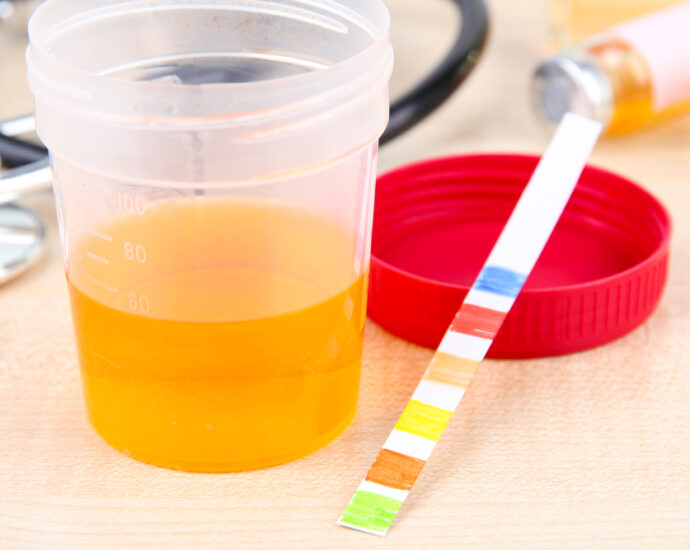Do you often find yourself rushing to the bathroom or experiencing discomfort during urination? These could be signs of underlying issues with your bladder health. Understanding the state of your bladder is crucial for overall well-being, and one way to gain insight is through a bladder void test. In this article, we’ll delve into why this test is important, what it entails, and how it can help you maintain optimal bladder health.
What is a Bladder Void Test?
A bladder void test, also known as a post-void residual (PVR) measurement, is a simple yet essential diagnostic procedure to assess bladder function. It measures the amount of urine left in the bladder after urination, indicating how effectively the bladder empties.
Why is it Important?
- Detecting Underlying Conditions: A bladder void test can reveal underlying conditions such as urinary retention, overactive bladder, or urinary tract infections (UTIs). Identifying these issues early allows for timely intervention and management, preventing potential complications.
- Monitoring Treatment Progress: For individuals undergoing treatment for bladder-related conditions, such as urinary incontinence or bladder dysfunction, regular bladder void tests help monitor the effectiveness of treatment and adjust the approach if necessary.
- Preventing Complications: Conditions like urinary retention, if left untreated, can lead to complications such as urinary tract infections, bladder stones, or kidney damage. By detecting and addressing these issues early, the risk of complications is significantly reduced.
What Does the Test Involve?
The procedure for a bladder void test is straightforward and typically performed in a healthcare provider’s office or clinic:
- Preparation: You may be asked to drink fluids beforehand to ensure your bladder is adequately filled.
- Measurement: You will be asked to urinate into a special container equipped with measurement markings or undergo a bladder ultrasound to assess the volume of urine remaining in the bladder after voiding.
- Interpretation: The healthcare provider will interpret the results based on the volume of urine left in the bladder. A higher residual volume may indicate bladder dysfunction or other underlying issues.
Conclusion
Your bladder health is integral to your overall well-being, and the bladder void test plays a vital role in assessing and maintaining it. By understanding the importance of this test and undergoing it as recommended by your healthcare provider, you can proactively manage your bladder health and address any potential concerns early on. Remember, early detection and intervention are key to preventing complications and enjoying a healthy, active lifestyle.
Take charge of your bladder health today by scheduling a consultation with your healthcare provider and discussing the benefits of a bladder void test. Your future self will thank you for it!
Page Contents
Frequently Asked Questions About Bladder Void Tests
What is a bladder void test?
A bladder void test, also known as a post-void residual (PVR) measurement, is a diagnostic procedure that measures the amount of urine left in the bladder after urination. It helps assess bladder function and detect underlying issues.
Why might I need a bladder void test?
You may need a bladder void test if you experience symptoms such as urinary urgency, frequent urination, difficulty urinating, or urinary incontinence. It’s also used to monitor bladder health in individuals undergoing treatment for bladder-related conditions.
How is a bladder void test performed?
During a bladder void test, you will be asked to urinate into a special container equipped with measurement markings, or you may undergo a bladder ultrasound to assess the volume of urine remaining in the bladder after voiding.
Is there any preparation required for a bladder void test?
Your healthcare provider may ask you to drink fluids beforehand to ensure your bladder is adequately filled. Follow any specific instructions provided by your healthcare provider to prepare for the test.
Does a bladder void test cause discomfort?
The test itself is not typically painful or uncomfortable. However, some individuals may feel a slight discomfort during urination, particularly if they have underlying bladder issues.
How long does a bladder void test take?
The procedure is relatively quick and typically takes just a few minutes to perform. However, you may need to wait for the results, which can vary depending on the healthcare provider’s practice.
What do the results of a bladder void test indicate?
The results of a bladder void test indicate the volume of urine left in the bladder after urination. A higher residual volume may suggest bladder dysfunction, urinary retention, or other underlying issues that require further evaluation and management.
What if my bladder void test results are abnormal?
If your bladder void test results are abnormal, your healthcare provider will discuss the findings with you and recommend further evaluation or treatment as needed. This may include additional tests, lifestyle modifications, medications, or referrals to specialists.
Are there any risks associated with a bladder void test?
A bladder void test is a non-invasive procedure and generally safe. However, there may be a slight risk of urinary tract infection (UTI) associated with the insertion of a catheter, particularly in individuals with a history of UTIs or compromised immune systems.
How often should I undergo a bladder void test?
The frequency of bladder void tests depends on your individual health needs and any underlying bladder conditions you may have. Your healthcare provider will recommend the appropriate timing for follow-up tests based on your specific situation.
Remember to consult with your healthcare provider if you have any concerns or questions about bladder void tests or your bladder health in general. They can provide personalized guidance and recommendations based on your unique needs and circumstances.
READ MORE: Urinary Tract Infection
Sources:
https://www.med.umich.edu/1libr/HealthyHealing/PVR.pdf
https://www.ncbi.nlm.nih.gov/books/NBK539839/
https://my.clevelandclinic.org/health/diagnostics/16423-postvoid-residual
